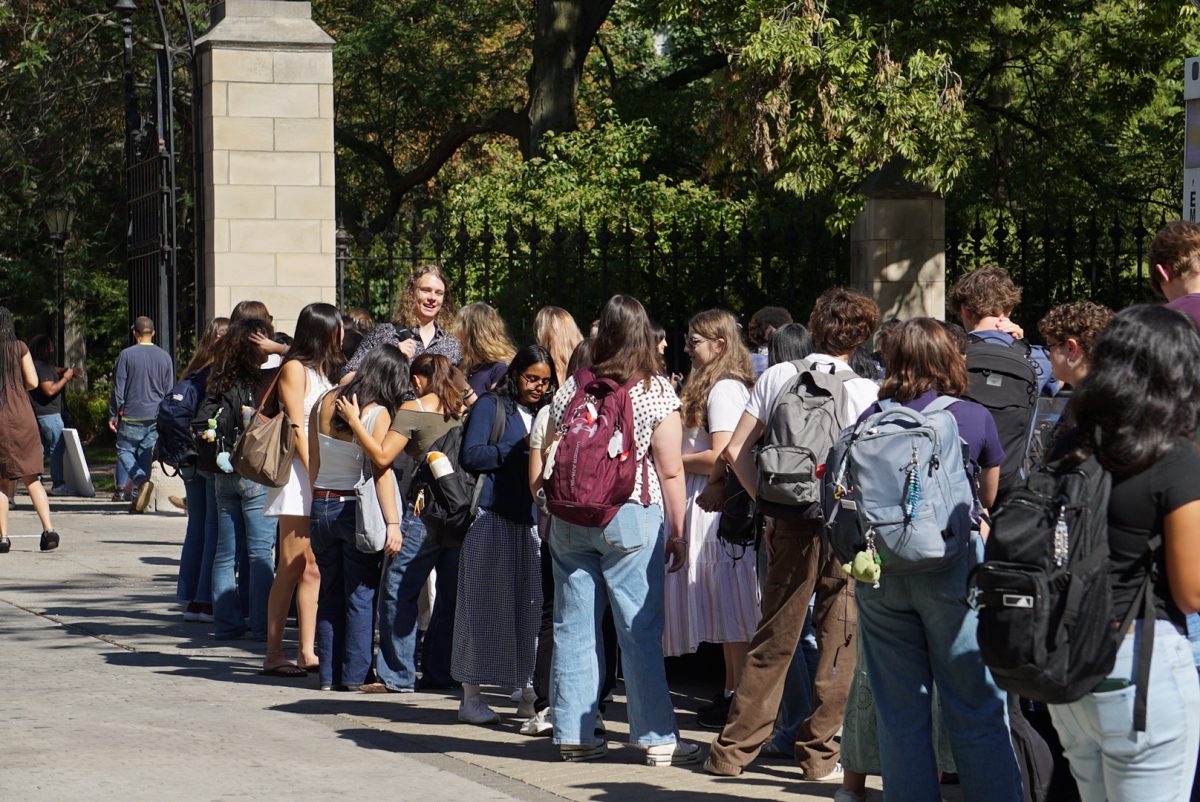The University Board of Trustees met for the first time this academic year Wednesday and Thursday. The two-day event brought board members together to make major decisions about the academic, administrative, and financial status of the University.
Kathryn Gould, M.B.A. ’78 attended for the first time since her recent appointment to the Board.
“We’re having a great year,” said University president Don Michael Randel. “The news is remarkably good.”
One major focus of the committee sessions was the current capital campaign, dubbed the Chicago Initiative, aimed at raising $2 billion over the next five years. “We’ve raised $763 million so far,” said Randel at a press conference following the final meeting. The money raised by the campaign will go towards improving research programs, building state-of-the-art facilities, and recruiting top faculty from around the country.
The two-day event consisted of committee meetings and events with researchers and faculty. Lunches were combined with lectures by University researchers who discussed their areas of study, from material science to nano-scale technology. The lectures and demonstrations illustrated to the trustees, who collectively donated nearly $200 million before the public launch of the campaign, the groundbreaking work that is being done with money collected through the campaign.
“How could we have expected anybody else to give money if our own Board didn’t volunteer first?” said Edgar Jannotta, chairman of the Board.
Over the next five years there will be a series of fundraisers designed to create enthusiasm among alumni for the school. “We’re holding a series of events in cities across the country in order to bring together the Chicago community in order to advance the campaign,” Randel explained.
The first event took place last week in New York City, and future events have been scheduled in Los Angeles, Washington, D.C., and San Francisco.
Given the current stock market volatility, Randel set about allaying fears that the endowment would be affected by market insecurity. “My father used to say that you should only gamble the amount of money that you’d be willing to fold up into a paper airplane and fly off the top of a building just for the sake of seeing it fall to the ground We don’t gamble with the University endowment.”
Management of the endowment is done directly by committees of trustees, or by contracted third parties. Investments range from domestic securities to emerging markets in the Far East.
The accounting committee and KPMG, an outside auditing firm, oversee the University’s finances. “We have been assured by our accountants that our books meet all accepted accounting standards,” Randel said, adding that the University’s credit remains among the highest in the nation, with a ranking of AA.
Funding from other foundations was also a major issue discussed at the meetings. As is standard practice, lists of trustees of the various foundations were distributed to members of the Board in the hopes that person-to-person contact would yield research funding necessary for the University.
Additionally, according to Randel, the new academic year brought with it major funding increases from several sources, including the National Science Foundation. “We saw a 30 percent funding increase this year,” Randel said, explaining that two other top institutions that would remain nameless had their funding cut.
“We are committed to ensuring that the University remain as powerful in scientific exploration in the 21st century as it was in the 20th century,” Randel said, adding that the Interdivision Research Building currently being constructed will help toward this end.
Wednesday and Thursday’s sessions were the first in a series of Board meetings that will take place throughout the year. “At this meeting, we laid out the agenda for the year,” Randel said.
In January, the Board will begin to discuss budget decisions for the following year, a process that will not be finalized until June. “In January, we begin to identify the main parameters to think about: raising tuition, fundraising goals, etc.,” Randel explained. “The administration then begins to work out the budget for the following year. We decide what kind of salary increases to give, how much benefits are going to cost, which is major because of the high cost of health insurance.”








